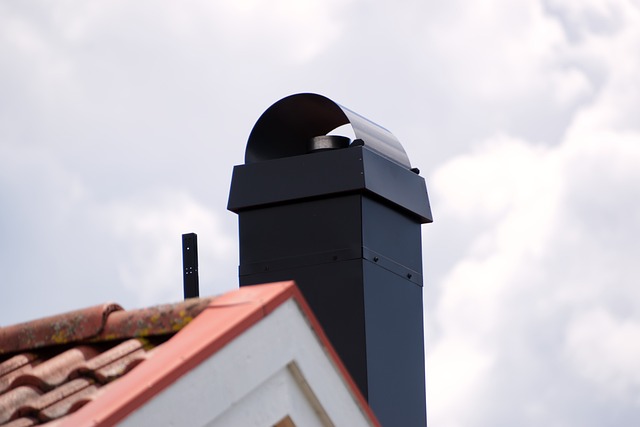Roofs, more than structural, significantly impact building aesthetics. Flat roofs offer modern sleekness while pitched roofs provide traditional charm and better water management. Combining these styles through custom angles in gabled roofs allows architects to create unique, visually striking structures blending contemporary and classic elements. Strategic use of flat-pitched roof combinations opens creative avenues for designers aiming distinct aesthetic outcomes, enhancing insulation and natural light while maintaining exterior alignment with the building's design vision.
Designing gabled roofs with custom angles offers an innovative way to achieve a unique aesthetic, breaking away from conventional designs. This article explores the art of combining flat and pitched roofs, providing a fresh perspective on architectural roofing. We delve into defining custom angles, enhancing structural considerations, and unlocking the esthetic appeal of diverse gable forms. By understanding the basic combinatorial approach between these roof types, architects and designers can create striking, tailored structures that stand out in any landscape.
Understanding Flat and Pitched Roofs: A Basic Combinatorial Approach
Roofs are an essential architectural element, offering structural support while also defining a building’s aesthetic appeal. Among the various types, flat and pitched roofs represent two distinct options with unique characteristics. In this context, understanding their combinations can unlock creative possibilities for designers seeking to achieve a specific look.
Flat roofs, characterized by their horizontal surfaces, provide a modern and minimalist appearance. On the other hand, pitched roofs, with their sloping sides, offer a traditional aesthetic and better facilitate rainwater drainage. Combining these two types can create an intriguing contrast, especially when incorporating custom angles. By carefully designing gabled roofs with varying pitches, architects can achieve a distinctive look that blends contemporary and classic elements, enhancing the overall visual appeal of a structure.
Defining Custom Angles: Breaking Away from Traditional Design
In the realm of architectural design, roofs are more than just structural elements; they’re a statement about style and functionality. When it comes to gabled roofs, the traditional flat and pitched combinations can often feel uninspired for those seeking a unique look. This is where custom angles come into play, allowing designers to break away from conventional aesthetics and create a distinctive, modern silhouette.
Defining custom angles involves carefully considering the intersection of roof planes, resulting in dynamic visual elements that defy symmetry. By combining flat and pitched sections at unconventional junctions, architects can craft roofs that echo contemporary design trends while still offering practical benefits like enhanced insulation or natural light infiltration. This approach not only stands out but also ensures a building’s exterior is tailored to its specific context and aesthetic vision.
Esthetic Appeal: Unlocking the Beauty of Unique Gabled Rooflines
In the realm of architectural design, gabled roofs with custom angles offer a unique opportunity to enhance aesthetic appeal and create a distinct look for any structure. By combining flat and pitched roof elements, designers can unlock a world of beauty and visual interest. These innovative rooflines break away from traditional monotony, allowing for dramatic and captivating silhouettes that capture the essence of modern aesthetics.
Custom angles add a layer of sophistication, enabling architects to play with light and shadow, creating dynamic contrasts that elevate the overall allure of the building. The interplay between flat and pitched sections can generate striking visual effects, making each roofline a piece of art in itself. This approach is particularly effective for contemporary designs, where standing out and embracing individuality are often key objectives.
Structural Considerations for Custom Angle Implementations
When designing gabled roofs with custom angles, structural considerations are paramount. Incorporating unique angles into a roofline can significantly impact the building’s overall stability and load-bearing capacity, especially when combining flat and pitched roof sections. Engineers must carefully evaluate the structural integrity of these designs to ensure safety and prevent failures.
Custom angle implementations necessitate precise calculations for slant height, hip rafter lengths, and ridge beams. The interplay between flat and pitched sections requires thoughtful detailing to maintain a balanced distribution of loads. Proper connections between components, including brackets, trusses, and purlins, are crucial in solidifying the roof’s structural framework, enabling it to withstand various weather conditions while preserving its distinctive aesthetic appeal.
Practical Tips for Designing and Implementing Angled Roofs
When integrating angled roofs into your design, consider both aesthetic appeal and structural integrity. Start by sketching various angles on paper to visualize different looks—a blend of flat and pitched roof styles can create a unique, modern design. Use software tools for precise measurements and to ensure your chosen angle falls within safe construction parameters.
For practical implementation, consult with a professional roofer who specializes in custom work. They’ll guide you on materials suitable for your chosen angle, ensuring longevity and weather resistance. Don’t overlook the impact of sunlight; angled roofs can dramatically alter light patterns inside—a design consideration when choosing finishes and interior layouts.
Incorporating custom angles into gabled roofs offers a unique design opportunity, blending the simplicity of traditional styles with modern aesthetics. By understanding the fundamentals of flat and pitched roofs and their combinatorial potential, architects can create striking structures that defy conventional boundaries. This approach not only enhances visual appeal but also encourages innovative structural considerations, ensuring that angled roofs are both beautiful and functional. With practical tips in hand, designers can confidently explore this distinctive option, revolutionizing rooftops and elevating architectural designs to new heights.
